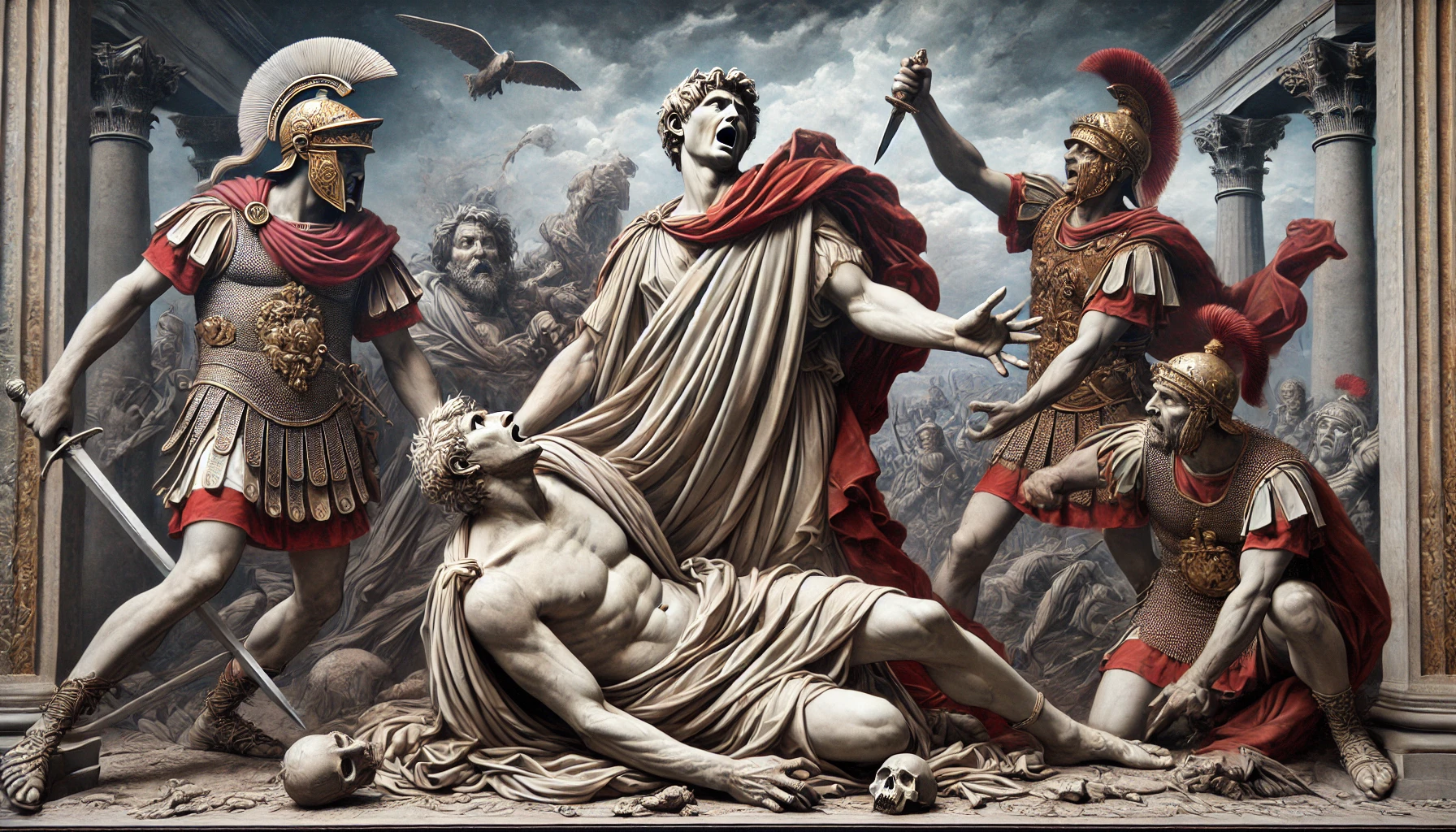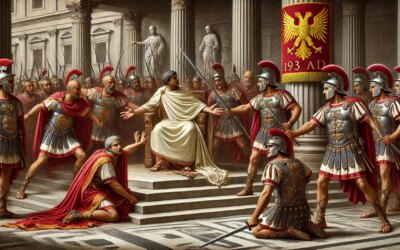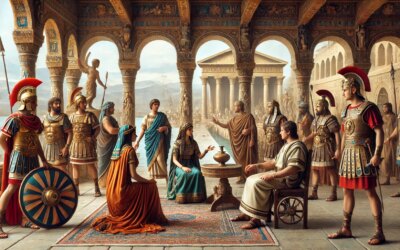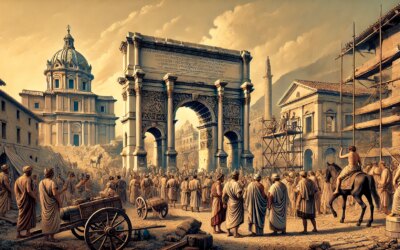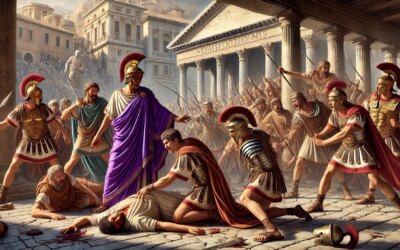The Emperor’s Descent into Paranoia
By 68 CE, Emperor Nero’s reign had spiraled into tyranny, extravagance, and political instability. Once a promising young ruler, Nero had become infamous for his excesses, his persecution of Christians, and his suspected role in the Great Fire of Rome. The Senate and the military, growing weary of his erratic leadership, turned against him.
Revolt and Betrayal
The turning point came when Gaius Julius Vindex, governor of Gaul, rebelled against Nero’s rule. Although the uprising was crushed, it emboldened others. The Senate, once his ally, declared him an enemy of the state. The Praetorian Guard, Rome’s elite military force, abandoned him. Alone and desperate, Nero fled Rome, seeking refuge in the villa of a loyal freedman, Phaon.
The Last Moments of an Emperor
As soldiers closed in, Nero was left with no choice. Lamenting that “the world is losing a great artist,” he prepared for death. However, he hesitated, forcing his secretary, Epaphroditus, to help him drive a dagger into his throat. When the soldiers arrived, they found him barely alive, gasping his final words: “Too late! This is fidelity.” He died at the age of 30, the last emperor of the Julio-Claudian dynasty.
The Aftermath: Rome in Chaos
Nero’s death left Rome in turmoil, ushering in the chaotic “Year of the Four Emperors.” With no clear successor, rival factions fought for control, leading to civil war. The empire, once stable under Augustus, faced one of its most precarious moments.
Legacy of a Controversial Ruler
Nero remains one of Rome’s most infamous figures. Some sources depict him as a cruel tyrant, while others argue he was misunderstood. His patronage of the arts, his architectural projects, and his influence on Roman culture endure, but his name is forever linked to decadence, persecution, and the downfall of a dynasty.
The dramatic end of Nero was more than just the fall of a man—it was a pivotal moment in Roman history, marking the shift from the Julio-Claudian era to a period of military rule and uncertainty.

